Join Our newsletter
Subcribe to get information about products and coupons
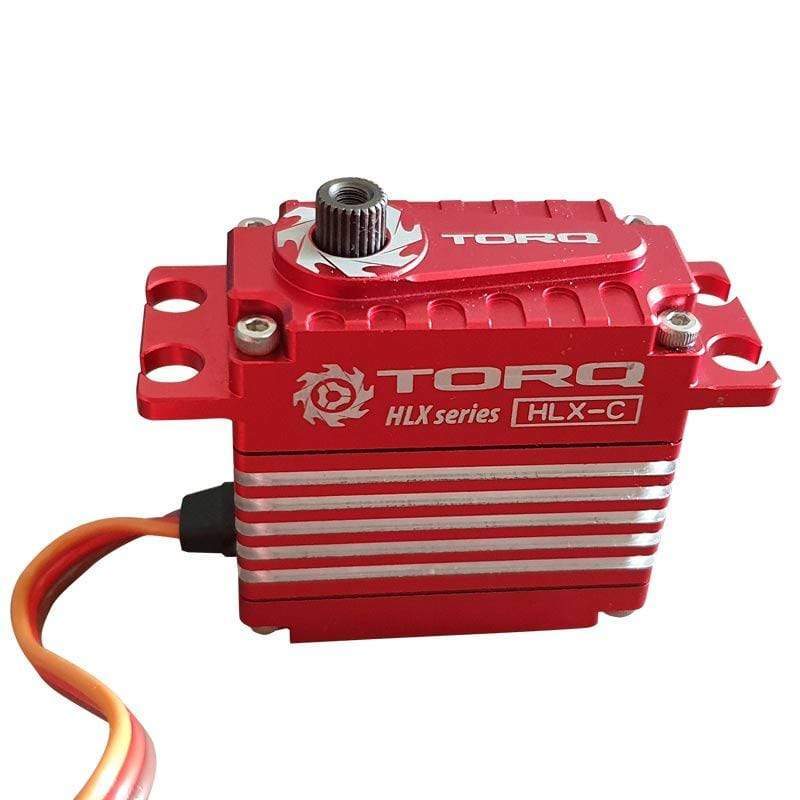
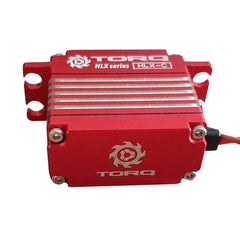
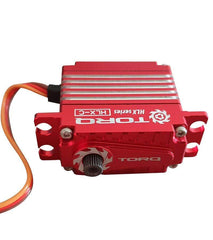
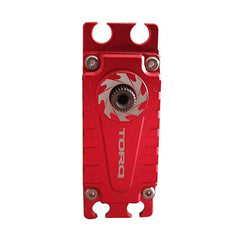
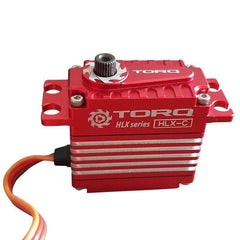






Earn 159 Reward Points when you buy this item.
Couldn't load pickup availability
- Using the newest Hall Sensor Technology
- Incredible Levels of Speed & Performance
- Ultra Precise, High Resolution Control
- Fully New Design Steel Gear Train for Maximum Strength
- 8.4V High Voltage Ready
- Optimized for Heli, Airplane & Jet Aircraft
- 6 Ball Bearings Construction
Speed:
0.07 sec / 60° @ 8.2V
0.09 sec / 60° @ 7.4V
0.11 sec / 60° @ 6.0V
Torque:
35Kg.cm / 486,05 oz in. @ 8.2V
30Kg.cm / 416,62 oz in. @ 7.4V
24Kg.cm / 333,29 oz. in. @ 6.0V
Specifications:
Motor Type: Brushless
Servo Arm Type: Futaba
Working Frequency: 1520us / 333Hz or 760us / 560Hz (need the TBOX Program Card)
Weight: 80g
Dimensions: 40mm x 20mm x 40mm (LxWxH)
Voltage Range: 6.0V - 8.4V
Servo Grommet is suggested use if you use our servo on Nitro Heli.

| Vendor: | TORQ Servos |
| SKU: | HLX-C |
| Barcode: | 0769923264899 |
| Availability: | In Stock |
| Product Type: | Heli Servo |
| Weight: | 0.3 lb |
Extremely powerful servos and aluminum housings looks fantastic
Great servos even better!
I’m installing these in my MA gasser when it arrives. They look like very nice servos.
Bought for SAB 700 Piuma helicopter, can’t wait to try out, they look outstanding.
For years I’ve looked at and considered some of the high end servos that are out there and I always had my reasons for not pulling the trigger on a set. I never saw the value in spending the money on them. Earlier this year I had been looking at a few different sets of servos for some new models that I was planning on building for the 2021 flying season. I went back and forth on what servo set to use and decided yet again that I would simply use what I had and were still reliable and in good shape. Fast forward a few months and I had been flying both models with the servos I had. Heli Direct contacted a few people about writing product reviews and I agreed to help where and when I can. When the new Torq HLX line of servos come out I was pretty excited because I was still looking at servos and thinking about replacing what I had. Next thing I know I was asked if I would pen a review on a set of the servos. I am the type of person that give an honest review. I do not believe in biased reviews. With all this said here is my honest opinion of the new Torq HLX series of servos.
Servo
The servos are all aluminum and have a good solid feel to them. The servo case is constructed of 3 sections, top, middle and bottom. The top and bottom sections are held to the center section with four socket head bolts for both top and bottom sections. The sides of the center section have grooves machined in all four sides of it creating cooling fins to aide in cooling. The servo has a 25 tooth spline output shaft. The servo boasts 6 ball bearings, hall sensor technology and metal gears throughout. Rounding out the servo is a nice red anodized finish and approximately a 8-12” servo lead with a “JR” style servo connector. The plastic servo arm that comes with has 4 holes in it that are spaced at approximately 10mm, 13.5mm, 17mm and 20mm from the center of the servo output shaft. The aluminum arm has three holes that spaced at approximately 18.5mm, 21.5mm and 24.5mm from the center of the servo output shaft.
For this review I replaced the servos that were in my three bladed SAB Raw. There isn’t much difference in specs between the cyclic servos but the Torq had more, well torque at 305 in. oz. and what it replaced had 211 in. oz. The Torq were just a touch slower at .09 While the old servos came in at .07. The biggest difference between them was the weight with 80g for the Torq and 72g for the others. The tail servos had more of a spread on them with the Torq again having more torque at 97 in. oz. and the one it replaced had 69 in. oz. In addition to the strength the Torq also had considerably more speed at .035 and the old servo had .05. With those gains also came a heavier tail servo. The Torq weighs in at 80g while the old servo was only 60g. In total, the four servos added 1.55 oz. heavier which on an electric 700 sized heli with a 4525 motor is negligible.
I’ve never been a fan of taking apart things that work but in all the servo swap took about an hour and a half. After the swap I checked the collective center, made sure the swash was level and double checked the pitch. I decided to leave all the rates and gains where they were so I had a baseline. I did the swap late on a Friday night so I had the Raw ready for Saturday so I did a thorough pre-flight when I got to the field. Once that was complete it was time to get in the air. In bank one on all may helis is a lower headspeed so I brought it up into a hover, checked the tracking and felt the heli out a little to see if there was any glaring issues right away. All was good there so I did some aerobatics and all seemed good in bank one at 1360 rpm. Now it was time to kick it up to bank two and see what happens at 1960. When I went to that head speed is when I noticed the first of the changes, straight away I had to drop the tail gain. After 2 flights and adjusting gains I ended up reducing the tail gain around 20 points and the head gains about 5 points. I attribute the massive reduction in tail gain to the much faster and more powerful servo it replaced. I’m not too surprised in the little reduction of cyclic gain as the specs between the Torq servos and the ones they replaced are not much different. I can tell that the centering is much better with the Torq servos. Point rolls and point flips are much easier to make look nice and feel more precise. Quick stops, tick tocks and were another area where the added torque was noticed.
In conclusion, I have to say that the servos were an overall improvement in how my heli flies. It feels more locked in that it ever has. The servos have great centering due to the hall sensor tech, they are strong and have a very nice finish. While there is a minuscule increase in weight, I also understand that with the speed and torque from these new servos they need a housing that can support it. There are several servo options out there in this category but I highly suggest that you give the HLX series servos a try.
Thanks for subscribing!
This email has been registered!